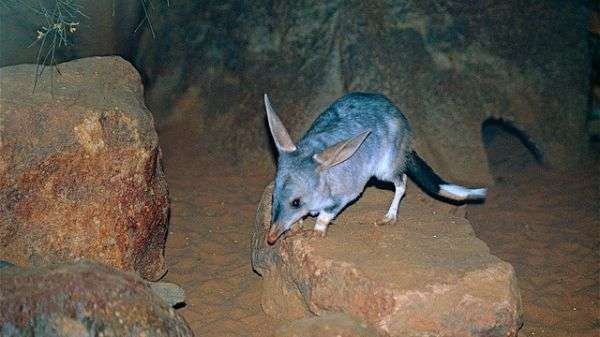Evolution provides 'leg up' for bandicoots and bilbies

Where you and I might see flesh and bones, Murdoch University's Dr Natalie Warburton sees evolution, conservation and the endless battle between predator and prey.
In dissecting 13 southern brown bandicoots (Isoodon obesulus) and four greater bilbies (Macrotis lagotis)—most the victims of car accidents or animals euthanised due to illness—Dr Warburton aimed to learn more about the adaptations that have enabled each species to thrive.
Dr Warburton studies anatomy to understand more about how animals live, how they have evolved to suit this lifestyle, and how we can contribute to safeguarding these species for the future.
"The more we know about an animal, the better we are able to tailor conservation efforts to individual species' needs," she says.
"Our understanding of the biology of animals, including how their anatomy reflects how they interact with their environment, is important for conservation."
Dr Warburton's studies focus on the hind and fore limbs of the cuddly bandicoots and bilbies, examining connective tissues and muscular anatomy before calculating wet muscle mass and studying cleaned bones for scars and muscle insertion marks.
She found that compared to the western grey kangaroo (Macropus fuliginosus), brush wallaby (Macropus irma), quokka (Setonix brachyurus) and brushtail possum (Trichosurus vulpecula), the limbs of both species were relatively muscly, with muscles attached to bones at points relatively distant from the joints, creating powerful leverage.
"An interesting discovery was just how strongly developed the leg muscles of the bandicoot are for powerful propulsion, probably for speedy escape from predators," she says.
"Southern brown bandicoots tend to live in fairly dense scrubbing habitats, and their torpedo-shaped body and powerful leg muscles seem particularly well suited to explosive escape behaviour," she says.
Humungous hamstrings
Compared to the bandicoot, the bilby's limbs were less muscled but more flexible, indicating its greater dependence on digging.
"Bilbies dig burrows in more open environments, and so their legs need to be able to both help with digging and running," Dr Warburton says.
In both species, the hamstrings comprised nearly 30 per cent of total hind limb muscle mass.
Hamstrings were also able to act across more than one joint, an adaptation Dr Warburton says may improve the animals' metabolic efficiency.
Dr Warburton says bandicoots have previously received very little scientific attention and this information can help inform how these marsupials might respond to introduced predators in their environment.
Provided by Science Network WA
This article first appeared on ScienceNetwork Western Australia a science news website based at Scitech.



















